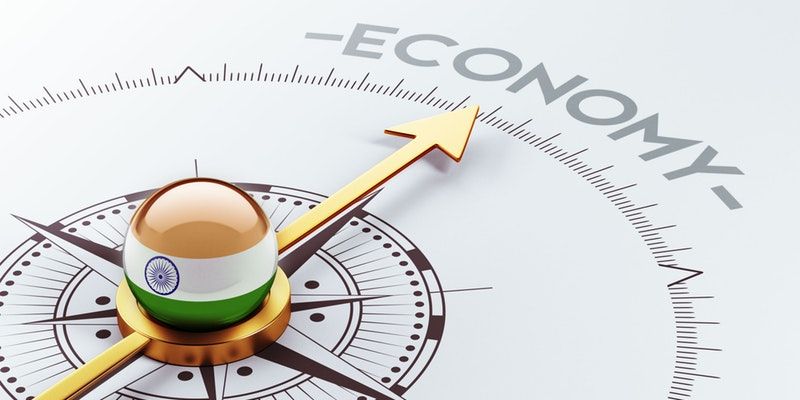
The Indian economy will grow at around 6.5% in the current fiscal as the country’s macroeconomic situation is benefiting from the reforms that have been taken up in the last nine years by the Narendra Modi-led government, former NITI Aayog Vice Chairman Rajiv Kumar said on Monday.
Kumar further said that India needs and can grow at 8%-plus as that level of economic growth is required to meet aspirations of the country’s young population and to generate sufficient jobs for its workforce.
“My growth projection (of India’s GDP growth in FY 2023-24) is 6.5%. “And I think we can easily maintain this (growth) over the next few years,” he told PTI in an interview.
India’s GDP growth in 2022-23 was 7.2%, lower than 9.1% in 2021-22.
According to Reserve Bank of India’s projections, India’s GDP is likely to grow at 6.5% in the current fiscal year.
Kumar further said, “Macroeconomic situation India is benefiting from the reforms that have been implemented in the last nine years. Therefore, both the external macroeconomic balance as well as the domestic ones are in good shape.”
He said that India’s current account deficit is manageable, the country’s foreign exchange reserves are sufficient to cover about 11 months of imports and the foreign direct investment flows are continuing.
.thumbnailWrapper
width:6.62rem !important;
.alsoReadTitleImage
min-width: 81px !important;
min-height: 81px !important;
.alsoReadMainTitleText
font-size: 14px !important;
line-height: 20px !important;
.alsoReadHeadText
font-size: 24px !important;
line-height: 20px !important;

On the domestic side, Kumar said inflation is beginning to come down to the target levels and the government tax revenues have shown a good 16 % increase over last year.
“So, this will take care of the fiscal situation and lead to fiscal consolidation. As a result of this improvement, the rating agencies have improved their ratings and JP Morgan has included India in its international bond indices,” he said.
According to Kumar, the only weakness that he sees is that the private corporate investment is not yet responding in the manner that “we would expect, but that also is beginning to improve as demonstrated by the increase in bank credit growth over the last six months”.
Expressing concern over decline of India’s exports between April and August by about 11% compared to the same period last year, he said, “This reflects our age old situation which is that India’s export performance is strongly correlated with the global trade performance.”
Kumar pointed out that as the global trade has weakened, India’s exports performance has also weakened given the weak demand in Europe, the US and other developed economies.
“We have to change this. We must do whatever we can to ensure that our exports have a greater share of world markets,” he said.
On some US-based economists’ claim that India is overstating economic growth, Kumar said that the Ministry of Statistics and Programme Implementation (MoSPI) must take a firm position and give enough reasons as to why they are using the wholesale price index (WPI) deflator and not the Consumer Price Index (CPI) as GDP deflator.
“And that needs to be firmly established once and for all,” Kumar emphasised.
Meanwhile, India’s real GDP growth was 7.8% on a year-on-year basis in Q1 FY24, as per the Income or Production Approach.
Recently, former chief economic advisor Arvind Subramanian, in an article, argued that India’s GDP is not measured from the expenditure side and measured only from the income side. This tends to over estimate GDP growth.
Last month, chief economic advisor V Anantha Nageswaran rejected criticism of “statistical discrepancy” in the first quarter GDP data, saying when the same statistical authority reported the severest contraction in the first quarter of 2020, the naysayers had called it credible as it suited their narrative.
The article by Nageshwaran was written in light of debates over India’s economic performance and economist Ashoka Mody, a Princeton University professor, raising concerns regarding the country’s GDP growth rate for the first quarter of the financial year 2023-24.
Edited by Megha Reddy








![Read more about the article [Funding alert] Tech platform Zoko raises $1.4M in seed round from Y Combinator, Binny Bansal’s family office,](https://blog.digitalsevaa.com/wp-content/uploads/2021/03/Untitleddesign2-1617178195226-300x150.png)

